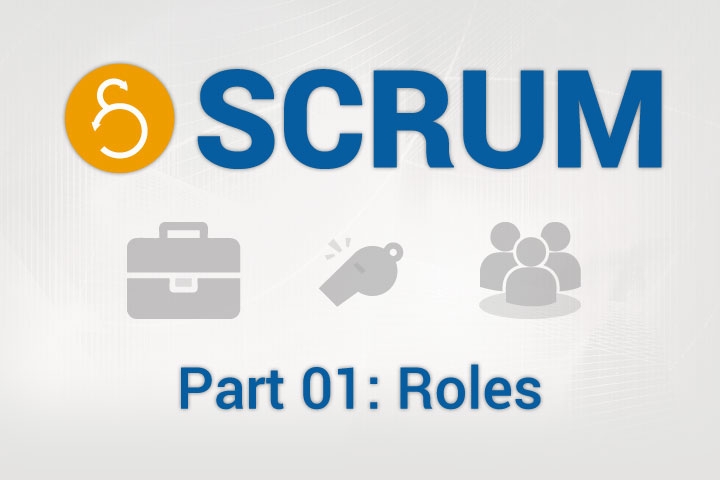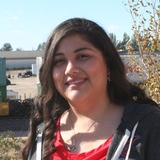What is up with all these cycles? Why are they so confusing? At first glance, Scrum can seem like a lot to comprehend, though no one eats an elephant in one bite.
Let's break each component down so that it's easier to understand.
Meet Scrum
It's a pleasure to introduce to you the often misunderstood: Scrum – an Agile project management methodology.
If you're a rugby fan, you may recognize the term. That's because the founders of Scrum realized that the scrum portion of the game could be applied to product development. They deduced that the relay approach to product development (such as the Waterfall methodology) may conflict with the goals of maximum speed and flexibility. Instead, a holistic approach -- like that of a rugby team that tries to go the distance as a unit, passing the ball back and forth -- may better serve today's competitive requirements.
This installment will introduce you to the different roles of Scrum.
The Scrum Team Roles
A Scrum team is composed of three roles: Product Owner (PO), ScrumMaster (SM) and the rest of team members, which I'll call team members for clarification. The team should be as complete as possible, to bring an idea can go from conception to implementation. Doing so well help get a better perspective on what it takes to complete each project milestone.
Product Owner
The Product Owner is the client's ambassador. They have limited access to the team members so that the team can focus on getting work done; thus, the Product Owner primarily interacts with the ScrumMaster. The team members decide what level of involvement the Product Owner should have with them.
The Product Owner's responsibilities include:
- Working with the stakeholders to formulate their needs and wants into tangible, realistic acceptance criterion
- Defining the features needed to realize the expected functionality
- Prioritizing and maintains the product backlog
- Expressing the stakeholder's concerns and expectations to the ScrumMaster, and vice-versa
- Managing the timeline and scope of the project to keep the project on track
- Optimizing the value of the work so that the product can be financially successful
- Accepting and rejecting work results delivered by the team members
ScrumMaster
The ScrumMaster is the team member's ambassador. They are the shield against impediments and distractions. They are the middleman between the team members and the Product Owner. Making sure to keep the momentum going so that the team can have a successful sprint.
The ScrumMaster's responsibilities include:
- Enforcing the values and principles of Scrum
- Managing the team's expectations and relieving their concerns
- Helping the team understand the acceptance criteria
- Working with the Product Owner and the team members to set realistic deadlines and milestones
- Assisting the team to overcome impediments
- Improving productivity in any possible way
The Team Members
The team members are comprised of at least one person from the relative departments that are necessary to complete each task. For example, to create a new application we need to do is UI design, user experience testing, copywriting, application development, quality assurance testing, and compose a marketing strategy – to name a few; thus, we would need at least one designer, one copywriter, one strategist, one business analyst, a developer, a quality assurance engineer, etc.
The team member's responsibilities are:
- Communicating questions, blockers/impediments and concerns with the ScrumMaster
- Working together as a team to accomplish the sprint forecast
- Deciding what to work on next as a whole
- Completing the work in a team effort as diligently as possible to produce a high-quality, potentially shippable product
- Demonstrating work to the Product Owner throughout and at the end of each sprint cycle
- To be cross-functional so that all skills that are needed from idea to implementation are represented
- To be self-managing and self-organized
Top 3 Most Common Questions
Why should my team be composed in such a manner?
The purpose of having a team composed in such a manner is so that the team knows all the work that must go into completing a task as a whole, not just each individuals's work. Everyone's skills and experiences are important and can contribute great insights when creating something.
Can the Product Owner and ScrumMaster be the same person?
Textbook Scrum recommends that the Product Owner and ScrumMaster should not be the same person; though, in practice, it's possible for one person to have both roles. Yet that person should be able to handle the volume of responsibilities as well as be able to separate each role when dealing with the stakeholders and the team members.
Can the stakeholders communicate directly with the team members?
The team members decide the level of communication they have with the stakeholders. Though it should be encouraged that all communication that is outside of the Sprint Review meeting should be directed to the Product Owner.
Summary
In a nutshell, Scrum is an iterative process involving three different roles (a Product Owner, a ScrumMaster, and the team members). The team members should be comprised of at least one person from each department so that an idea can go from conception to implementation. The Product Owner handles the stakeholders, is the stakeholders' ambassador when dealing with the ScrumMaster and manages the direction of the project according to the stakeholder feedback. The ScrumMaster is the master and enforcer of Scrum values and principles, is the team member's ambassador when dealing with the Product Owner, and helps the team improve productivity in any possible way. The team members decide the level of communication and access the stakeholders and Product Owner have with them though it's encouraged that the majority of stakeholder communication goes through the Product Owner.
What's Next
The next installment we'll be discussing the Scrum meeting cycle which includes Product Backlog Creation, Sprint Planning, Daily Standups (also known as Daily Scrums), Backlog Grooming (also known as Product Backlog Refinement), Sprint Review (or Demo), and Sprint Retrospective.
If you have any questions on the Scrum roles or have suggestions for another series or installment leave a comment below. Let's share our knowledge.

